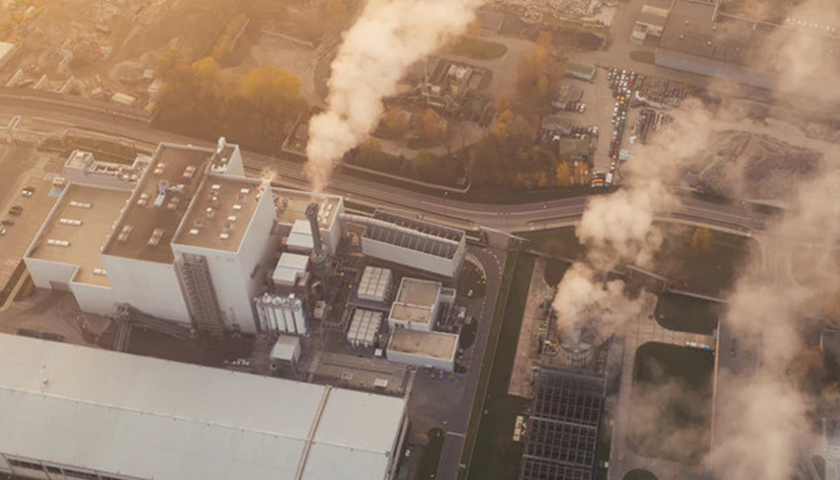by Benjamin R. Dierker
Carbon taxes, emissions caps, subsidies – these all seek to reduce atmospheric emissions of greenhouse gases, yet regularly meet criticism and opposition. Is there a more efficient solution to achieving climate balance? Not only is the answer yes, but the potential benefits could far outperform what other strategies hope to achieve.
Most solutions seek to reduce emissions –abruptly or over time– or attain carbon neutrality by utilizing renewable power sources, but increasingly we hear that carbon neutrality is not enough. We must find new technology and techniques to reduce greenhouse gases already in the atmosphere, which will require meaningful investments in research and development. One solution is voluntary carbon offsets.
Carbon offsets are certificates for purchase intended to counteract operational emissions or capture legacy emissions from the past. This is done by paying for a given quantity of CO2 to be neutralized through investment in offsetting projects or technology. Whether the certificates are directed towards conservation efforts, renewable energy, or carbon capture or removal, purchasing carbon offsets provides one party investor satisfaction and the other party an infusion of funding intended to finance a carbon-reduction strategy. When purchasing high quality offsets, these serve as a down payment and incubator toward the best climate solutions available in the laboratory or in the field.
Carbon offsets can be more than a gesture; they offer a jolt of energy, in the form of sustainable funding, into climate-focused startups. Here is how:
First, carbon offsets are a voluntary market, allowing both parties – the purchasers and beneficiaries of carbon offsets – to efficiently allocate their own resources.
Companies from all industries are already seeing strong pressure from the public, shareholders, competitors, media, and public officials to improve their operational footprints. Greater adoption of environmental, social, and governance (ESG) pledges indicate corporations are trending toward more environmental focuses. When looking for ways to expend resources, offsets offer new options. And while choosing to purchase carbon offsets does offer great boardroom benefits, it also reallocates resources to critical environmental improvement projects.
Second, both profitable corporations and shoestring-budgeted startups benefit from carbon offsets. Due to specialization, most companies do not need to undertake costly retrofitting of their buildings or attempt to develop carbon mitigation, capture, and storage capabilities beyond their expertise. They can stay on mission for shareholders and customers, while simultaneously allocating critical funds directly to innovators who have dedicated their lives, skills, and passions to carbon solutions.
Corporations purchasing carbon offsets gain environmental bona fides and achieve corporate pledges by neutralizing their operational impact, but while doing so, they are also investing in smaller enterprises. These investments benefit climate innovators who receive vital funding to bolster technological efficiency, capacity, and scalability.
Finally, investments made through the purchase of offsets can jumpstart an entirely new industry. Many offsetting projects have not yet overcome economic hurdles to becoming viable in the marketplace or scalable at industrial levels, despite proofs of concept and incredible promise. Carbon offset purchases can direct resources to conquer these barriers, giving way to an entirely new industry that soon stands on its own. Getting there simply requires scalability and economic value like selling or repurposing carbon, generating energy, or developing new green technology. This is the beginning of a new and dynamic carbon market, which carbon offsets can help initiate.
This circular economy will mean that high-quality projects like direct air capture can receive offset funds to remove CO2, then turn around and sell or repurpose the same CO2 to generate revenue (e.g. as feedstocks, fertilizers, fuels, and more). With money coming in from both sides, these projects can expand, and others will enter into the market. As other innovators seek to use CO2 as inputs for building materials and more, innovation will generate new demand as well.
Through robust use of voluntary high-quality carbon offsets, the private sector will not only achieve carbon neutrality and begin to halt the pace of global emissions, but the projects it funds will eventually be able to capture or store more carbon than the purchased offset scope. As competitors arrive, climate solutions will be tested, proven, refined, and made more cost effective and accessible, ultimately reducing CO2, planting trees, and providing renewable power at rates far higher than subsidies or penalties could produce.
On an environmental front, David Johnson, whose career has focused on conservation and environmental quality, explains that offsets offer three key benefits: curbing emissions, raising awareness of new technologies, and raising the standard for industry actors.
Technologically, focus on market-driven innovation can create new value. For instance, through the Carbon XPRIZE, which focuses on the circular carbon economy, experts explain that “together these solutions will transform our economy and redefine our climate future.”
The success of any strategy depends on buy in. Taxes and regulations often force economically inefficient decisions and face legal challenges. Voluntary carbon offsets are the most economically efficient solution, a private mechanism that serves as a climate solutions incubator funded by high net-worth individuals and corporations seeking to advance their environmental credentials.
With new money from offset purchases, we can expect to see new and innovative carbon capture, conservation efforts, tree planting, direct air capture, methane abatement, and far more, which in turn stimulate a circular carbon economy. Ultimately, this mutually beneficial arrangement will generate a self-sufficient industry with the power to reduce and reverse environmental impacts past and present.
– – –
Benjamin thinks, writes, and talks about economics, law, and public policy. His articles are intended to present issues in a new light to readers and do not necessarily reflect personal opinion. No articles represent the views of past or present employers.





